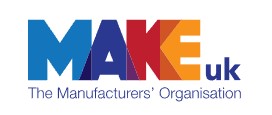
A Half Time Review of 2022
Released On 29th Jun 2022
At the beginning of the year we published our Executive Survey 2022 report, in partnership with PwC. It provided an overview of business leaders' expectations for 2022. Six months on, the sector faces strong headwinds in rising energy costs, access to raw materials and transport costs together with increasing inflation and on-going supply chain disruption.
This has been accompanied by significant domestic political uncertainty which is diverting Government attention from a laser-like focus on promoting economic growth. In this blog we look at how the two themes we identified - agility and resilience - are more important than ever in 2022.
Rising energy costs
The first of the external shocks manufacturers have faced this year has been rising energy prices. Events unfolding in Ukraine, as well as a global increase in demand for energy, has driven up the prices of wholesale energy costs – electricity and gas – and consequently the cost of doing business. Not only is this impacting energy intensive industries, but it is also impacting manufacturers across the board.
In fact, energy costs have increased by between 25% and 90% and, in some individual cases, up to 300% over the last year. Consequently, these high energy prices are resulting in almost six in 10 manufacturers adjusting their business practices to reduce energy consumption.
But there is only so much that manufacturers can do. The Make UK / PwC Executive Survey 2022 flagged insufficient capacity with supply chains (including energy) as a top three risk in 2022 for manufacturers and it is clear from speaking to manufacturers across the country that this is the number one issue for them right now. A key date in the diary for all is the Chancellor’s Autumn Budget and with 49% of manufacturers ready to increase investment in green technologies this year, they will be looking for policy interventions to pursue these investments as well as immediate measures to combat spiralling energy costs. Today’s challenges shouldn’t take away from the manufacturers (49%) who are ready to invest in the future.
Inflationary pressure
The second challenge manufacturers have faced is increased inflation. Once again manufacturers saw early warning signs, and as a result, over half flagged significant upward pressure on input prices as a key domestic risk for 2022. Manufacturers have seen steep increases in input inflation of up to 18.6% as the raw material shortages continues. Against this backdrop, input inflation is feeding into consumer inflation and manufactures have seen price margins squeezed once again this year - all of which is impacting manufacturer’s ability to meet and fulfil their orders.
Workforces continue to be a core focus of manufacturers’ plans for 2022 with employment intentions remaining high, however, wage inflation is beginning to bite. On average manufacturers settled their pay increases at 3% in January, however many are reviewing this mid-year and offering up to 5%. Competition for talent is becoming fierce and retaining staff so that manufacturers can win, and fulfil orders is a top priority. Increasingly manufacturers are looking beyond pay to wider offers to attract and retain talent – this includes offering greater flexible working, as well as one-off bonus payments. It is clear that those who can retain talent in their businesses can ride the choppy waters in the remaining half of the year.
Recovering supply chains
A myriad of external shocks in 2022 have also meant global supply chains are still in recovery mode. As a result, soaring transport costs, increased lead times and difficulties accessing raw materials are turning ‘just in time’ manufacturing to ‘just in case’. At its peak, 76% of manufacturers said they had been adversely impacted by increased transportation costs, with shipping container rates hitting $20,000 earlier in the year.
To spread the risk, the Make UK / PwC Executive Survey 2022 found that almost one quarter of manufacturers are reviewing and/or shortening their supply chains after having astutely learnt valuable lessons about vulnerabilities and resilience in recent years. We expect this trend to continue throughout 2022 and into 2023. But to do so successfully, manufacturers need to prioritise visibility of their supply chain. This is the key to building resilience and agility.
What next?
Yet again the manufacturing sector needs to demonstrate that being agile and resilient in the face of uncertainty can lay the foundations for future growth. As such manufacturers should consider:
- How they can further reduce energy consumption and cut their energy bills by taking advantage of the changes to business rates relief.
- Benchmark their pay and wider offers to new and existing talent to ensure they are competitive.
- Monitor their supply chain and explore how digital technologies can help achieve greater visibility.
Read our full report: Make UK/PWC Executive Survey 2022: Harnessing Agility and Resilience | Make UK






